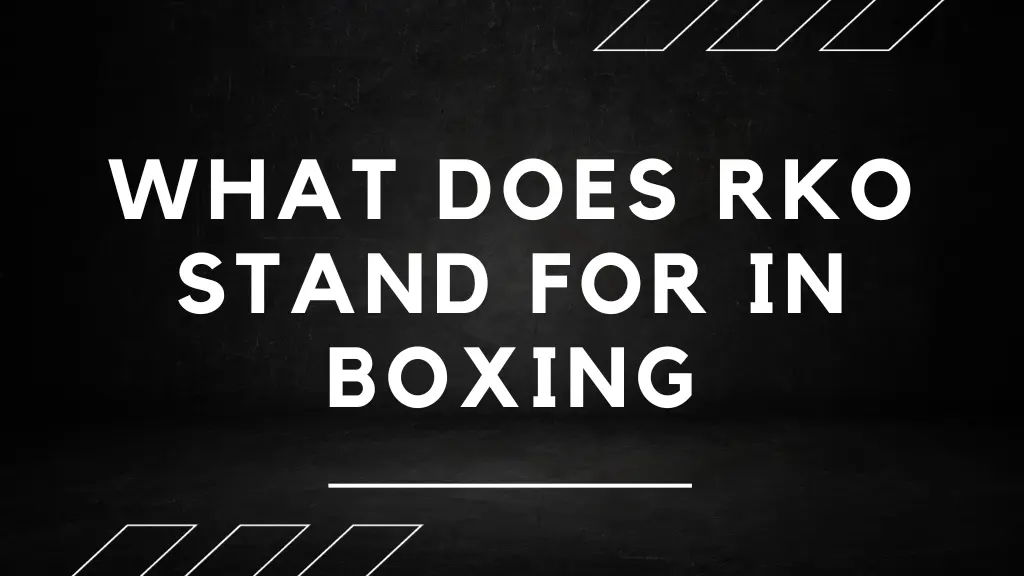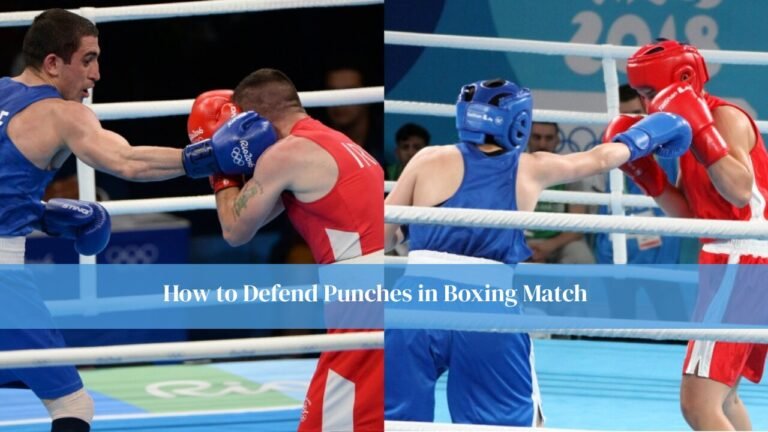In the fast-paced world of combat sports, acronyms often carry a deeper meaning than they first suggest. One such abbreviation that has captured public imagination is “RKO.” While many associate it with professional wrestling thanks to Randy Orton’s signature move, its mysterious appearance in boxing circles has sparked curiosity among fans and newcomers alike.
But what exactly does RKO mean in the context of boxing, and why has it stirred debate among enthusiasts? Let’s step into the ring of facts, history, and popular culture to decode this enigmatic term.
RKO A Wrestling Legacy That Bled Into Boxing
To truly understand the use of RKO in boxing, we first need to look at its origin. RKO isn’t a traditional boxing term. Instead, it gained mass recognition from WWE superstar Randy Orton, who introduced “RKO” as his finishing maneuver, a jumping cutter that quickly became one of the most replayed highlights in wrestling history.
Orton’s move was so dynamic and visually gripping that it transcended wrestling, earning viral fame across platforms like Vine, YouTube, and TikTok. The phrase “outta nowhere” became synonymous with sudden takedowns, and fans began applying the term to knockout punches in boxing and MMA that mimicked the unexpected nature of the RKO.
So while it’s not officially part of boxing’s technical glossary, its crossover appeal is undeniable.
The Rise of the “RKO Knockout” in Modern Boxing Commentary
You’ve probably heard commentators or fans shout, “That was an RKO!” after a boxer lands a sudden, dramatic knockout blow. This usage isn’t about form or technique it’s about timing and surprise. Like Randy Orton’s move, these boxing knockouts catch both the opponent and the audience completely off guard.
The RKO reference adds a layer of showmanship to boxing commentary. It taps into the pop culture influence of professional wrestling while highlighting the explosive moment a fight changes in a single punch.
As social media continues to blur the lines between entertainment and sport, terms like RKO are becoming part of boxing’s unofficial lexicon, especially among younger fans.
Is RKO a Real Boxing Term? Clearing the Confusion
Here’s the truth: RKO has no official status in boxing terminology.
In boxing, the technical classification for a knockout is simply a KO (knockout) or TKO (technical knockout). These are clearly defined within professional rules, and you won’t find RKO listed in any sanctioned boxing handbook.
However, the growing cultural crossover from wrestling means many casual fans now use RKO as slang for a sudden, jaw-dropping KO. It’s a form of metaphor, not a mechanical move.
This linguistic adoption mirrors trends seen in other sports, where popular phrases from different disciplines migrate across fanbases, reshaping the way moments are described and celebrated.
The Internet’s Role in Popularizing “RKO” in Boxing
The internet has played a significant role in transforming RKO from a wrestling move into a broader cultural reference. Viral compilations of knockouts labeled with “RKO outta nowhere” music or effects have generated millions of views.
This meme-fueled transformation has influenced boxing fans and even fighters, who now embrace the RKO reference as part of fight hype, memes, and promotional content. The more spectacular the KO, the more likely it is to earn the RKO tag on social platforms.
Some fight promos even go so far as to tease an “RKO moment”, especially when marketing up-and-coming knockout artists. That speaks volumes about the term’s marketing power, even outside its original sport.
Fighters and Analysts Weigh In
While seasoned boxing analysts tend to avoid the term in formal discussions, some have acknowledged its usefulness in grabbing fan attention. As former champion and commentator Paulie Malignaggi noted in a podcast, “Sometimes, describing a knockout as an ‘RKO’ gives casual fans something to relate to. It’s not about being accurate, it’s about connecting.”
Fighters themselves are also jumping on board. Jake Paul, known for blending entertainment with boxing, has referred to some of his knockouts as “RKO moments.” His crossover style of promoting fights, part influencer, part athlete is a perfect fit for pop culture-infused commentary.
The RKO’s Symbolic Power: Surprise and Spectacle
At its core, the RKO symbolizes unpredictability. In boxing, that’s one of the most electrifying elements — the idea that in any moment, with one punch, everything can change.
This is what makes the term so appealing to use. It captures the essence of shock knockouts, where the underdog wins, or a dominant fighter falls from grace in an instant.
In this sense, RKO is less about technique and more about storytelling packaging a dramatic fight moment in a way that resonates across platforms and audiences.
Debunking Misconceptions About the Term
There are plenty of myths surrounding RKO in boxing. Some believe it’s a special kind of KO or that it involves a particular move, like an uppercut or hook. That’s not accurate.
The confusion arises mostly from media headlines and viral content, which sometimes blur the line between entertainment and actual fight mechanics.
For clarity: no regulatory body in boxing recognizes RKO as a technical term. It’s purely slang, and while widely understood in a pop culture sense, it holds no official place in scorecards or bout summaries.
The Future of “RKO” in Boxing Culture
Will RKO ever be formally adopted into boxing language? Unlikely.
However, its use as a cultural shorthand is only growing. With the next generation of fans raised on memes, WWE highlights, and TikTok edits, expect terms like RKO to become even more ingrained in boxing commentary at least unofficially.
Promoters and influencers are likely to continue capitalizing on the term’s energy, especially in building hype around fighters known for highlight-reel finishes.
In many ways, RKO represents the new era of combat sports, one where entertainment, storytelling, and athleticism collide in real-time.
FAQs
What does RKO mean in boxing?
RKO isn’t an official boxing term. It’s a pop culture reference borrowed from professional wrestling, used informally to describe a sudden or surprising knockout.
Is RKO an actual move in boxing?
No, there’s no specific technique called RKO in boxing. It’s metaphorical, used to emphasize the dramatic nature of a KO.
Where did the RKO term originate?
The term originated from WWE wrestler Randy Orton’s signature move, the “RKO,” which gained viral fame for its unpredictability and flair.
Why do people use RKO in boxing?
It’s mostly for entertainment and comparison. The term captures the spirit of a shocking knockout, much like the surprise element in wrestling’s RKO.
Can a boxer perform an RKO?
Not in the literal sense. Wrestling moves like the RKO are not permitted in boxing. The term is only used figuratively to describe explosive knockouts.
Conclusion
While the RKO isn’t part of official boxing lingo, it has found a unique place in the sport’s evolving culture. Fueled by viral videos, crossover athletes, and modern fight promotion, RKO is becoming an emblem for the unexpected, the spectacular, and the unforgettable.
So, the next time you see a fighter land a jaw-dropping KO, don’t be surprised if fans start shouting “RKO outta nowhere!” Because in today’s fight game, the line between sports and spectacle is as thin as a well-thrown jab. Visit boxing essential to explore more.




